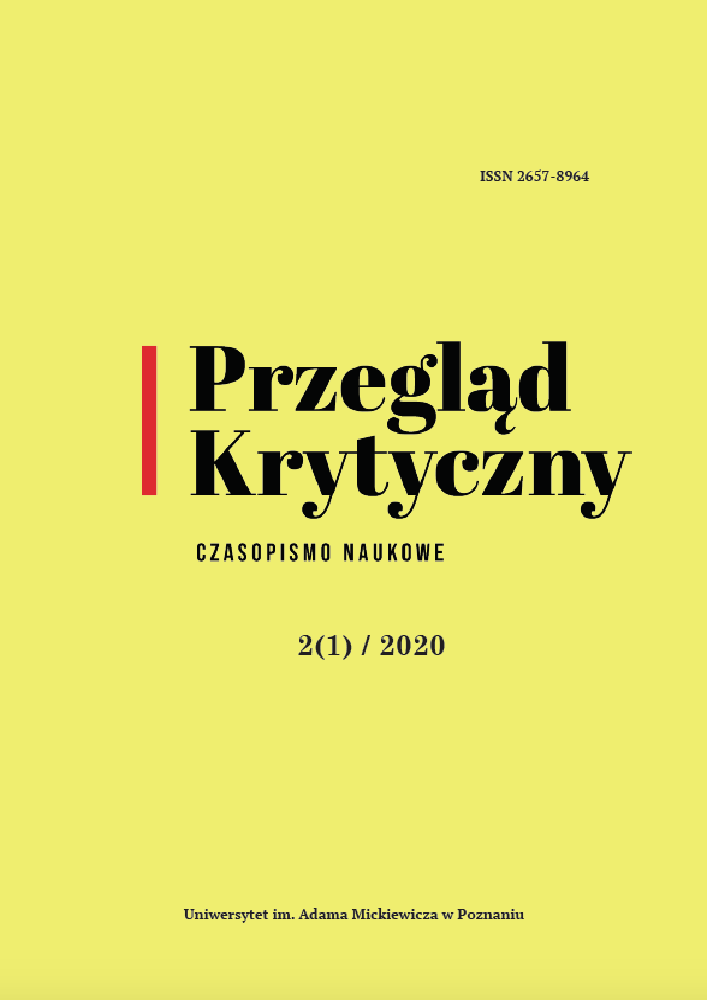Abstract
The author of the text touches upon the subject of the virtual activity of women’s movements in Poland. By using the netography method, with the specific application of an analysis of social networks, she looks at the digital image of Polish feminism, paying attention to the positive and negative aspects accompanying women in their struggle in online space. The author’s main goal was to study the language used by contemporary feminists in the virtual world, whether it is a language of love or a language of hate.
The article presents the activities of women’s organizations online, making an attempt at outlining the main ideas visible in the discourse of these movements. Owing to the conducted analysis, the author presents the impact and the clearly outlining intentions of women’s movements online, with particular attention paid to both the positive and the hostile interactions in the feminist online space.
References
Angrosino, Michael. 2010. Badania etnograficzne i obserwacyjne. Warszawa: Wydawnictwo Naukowe PWN, s: 19.
Berkowitz, Steve D. 1982. An Introduction to Structural Analysis. The Network Approach to Social Research, Toronto: Butterworth.
Demiral, Seran. 2019. There is no discrimination between girls and boys! “Society Register” 3(4): 137-156. https://doi.org/10.14746/sr.2019.3.4.08
Garton Laura, Haythornthwaite Caroline, Wellman Barry. 1999. Studying On-line Social Network. W: Stave Jones (red.), Doing Internet Research. Critical Issues in Methods for Examining the Net, Thousand Oaks, CA: Sage, s. 75.
Humm, Maggie. 1993. Słownik teorii feminizmu, Tłum: B. Umińska, J. Mikos. Warszawa: Wydawnictwo Naukowe Semper.
Kozinet, Robert V. 2012. Netnografia. Badania etnograficzne online. Warszawa: Wydawnictwo Naukowe PWN, s. 13, 93, 100.
Lewandowska, Ewa. 2003. Feminizm a globalizacja. „Dziś” nr 12.
Odrowąż-Coates, Anna. 2014. Gender crisis in Poland, Catholic ideology and the media. “Sociology Mind” 5(01): 27-34. http://dx.doi.org/10.4236/sm.2015.51004
Odrowąż-Coates, Anna. 2015. Is gender neutrality a post-human phenomenon? The concept of ‘gender neutral’ in Swedish education. “Journal of Gender and Power” 3(1): 113–133.
Odrowąż-Coates, Anna. 2019. Gender equality and children’s equality in liberal and conservative discourses: Implications toward language and society. “Society Register” 3(4): 7-16. https://doi.org/10.14746/sr.2019.3.4.01
Offiong, Ekwutosi E. 2019. Language and discourse in Nigerian Education: Historic implication of gender issues. “Society Register” 3(4): 37-56. https://doi.org/10.14746/sr.2019.3.4.03
Tokarczyk, Roman. 2005. Wspólczne doktryny polityczne. Kraków: Oficyna a Wolters Kluwer Business.
Wajbert-Wąsiewicz, Ewelina I. 2017. Feminizm w polskiej literaturze kobiet. “Annales Universitatis Mariae Curie-Skłodowska” Vol. XV, 2.
Wollman, Barry. 1988. Structural Analysis. From Method and Metaphor to Theory and Substance. W: Barry Wellman, Stephan D. Berkowitz (red.) Social Structures. A Network Approach, Cambridge, UK: Cambridge University Press, s. 19-61.
Wollstonecraft, Mary. 2011. Wolanie o prawa kobiet. Warszawa: Mamania.
Zsogon, Maria C. 2019. Girls´ exploitation in the Triple Border among Argentina, Brazil and Paraguay: between colonialism and human rights narratives. “Society Register” 3(4): 57-74. https://doi.org/10.14746/sr.2019.3.4.04
License
W przypadku zakwalifikowania tekstu do druku Autor wyraża zgodę na przekazanie praw autorskich do tego artykułu wydawcy (zob. Polityka open access). Autor artykułu zachowuje prawo wykorzystania treści opublikowanego przez czasopismo artykułu w dalszej pracy naukowej i popularyzatorskiej pod warunkiem wskazania źródła publikacji.


